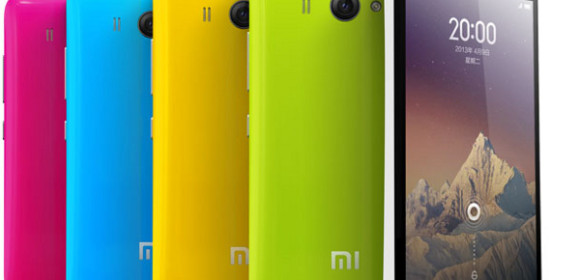Chinese smartphone maker Xiaomi has launched an aggressive push into India – placing renewed pressure on market leader Samsung and increasing competition in the country’s fast-growing mobile-device sector.
Xiaomi’s combination of high-end handsets with bargain basement prices has proved hugely popular in China, where it overtook Apple in sales last year, and now vies with Samsung for top spot in the world’s largest smartphone market.
The privately owned group was valued at $10bn during its last fundraising round in 2013, having become known for its rapid growth and unconventional marketing since launching in China in 2011.
However, co-founder Lin Bin said that Xiaomi would now invest heavily in India, placing Asia’s third-largest economy at the heart of a wider expansion into major developing economies, including Brazil and Indonesia later this year.
“This [India] is the biggest market we have entered . . . and it will be probably the most important market [outside China] for us as we expand,” he said.
With overall smartphone sales growth slowing in China, India has become an increasingly important focus for global manufacturers, as the country’s 650m mobile-phone users upgrade from more basic models.
India became the world’s fastest growing smartphone market during the final quarter of 2013, according to consultants IDC, and is set to become the world’s third-largest market by sales this year.
Xiaomi’s launch marks the latest in a flurry of new entrants into India, including rival Chinese manufacturers such as Lenovo and ZTE.
Their arrival presents a particular challenge for Samsung, the world’s largest smartphone maker by sales, which has already had its profits eroded following fierce battles with cut-price rivals in China.
Xiaomi will also take on local Indian manufacturers such as Micromax, which has grown rapidly by selling inexpensive, rebranded handsets imported from China.
The Chinese group intends to sell its phones online only – via a partnership with Flipkart, India’s largest ecommerce site by sales – rather than using the small family-owned stores favoured by many other mobile companies.
Anshul Gupta, a smartphone analyst at consultant Gartner, said that Xiaomi would nonetheless face significant challenges differentiating its products in the country’s crowded and price-sensitive market.
“It isn’t going to be easy to please the Indian consumer. How many people can even pronounce Xiaomi here?,” he said.
However, Jayanth Kolla, of Bangalore-based telecoms group Convergence Catalyst, said Xiaomi’s distinctive operating system, cut-price online distribution model and “cult-like branding” could prove popular as India’s smartphone sector continued to grow.
“These factors all worked in China, and if they make them work in India it could be a real game changer . . . Samsung and Micromax will be worried by their arrival.”
Mr Bin said that Xiaomi would invest in local design teams to develop mobile internet services suitable for Indian consumers with a taste for Bollywood movies and cricket, rather than trying to make money on handset sales.
“For us the user base is critical, not the amount we make per device,” he said. “This is how Google grew, selling services to millions of users . . . so to us it is the huge size of the Indian market that matters.” Source : http://www.ft.com/

